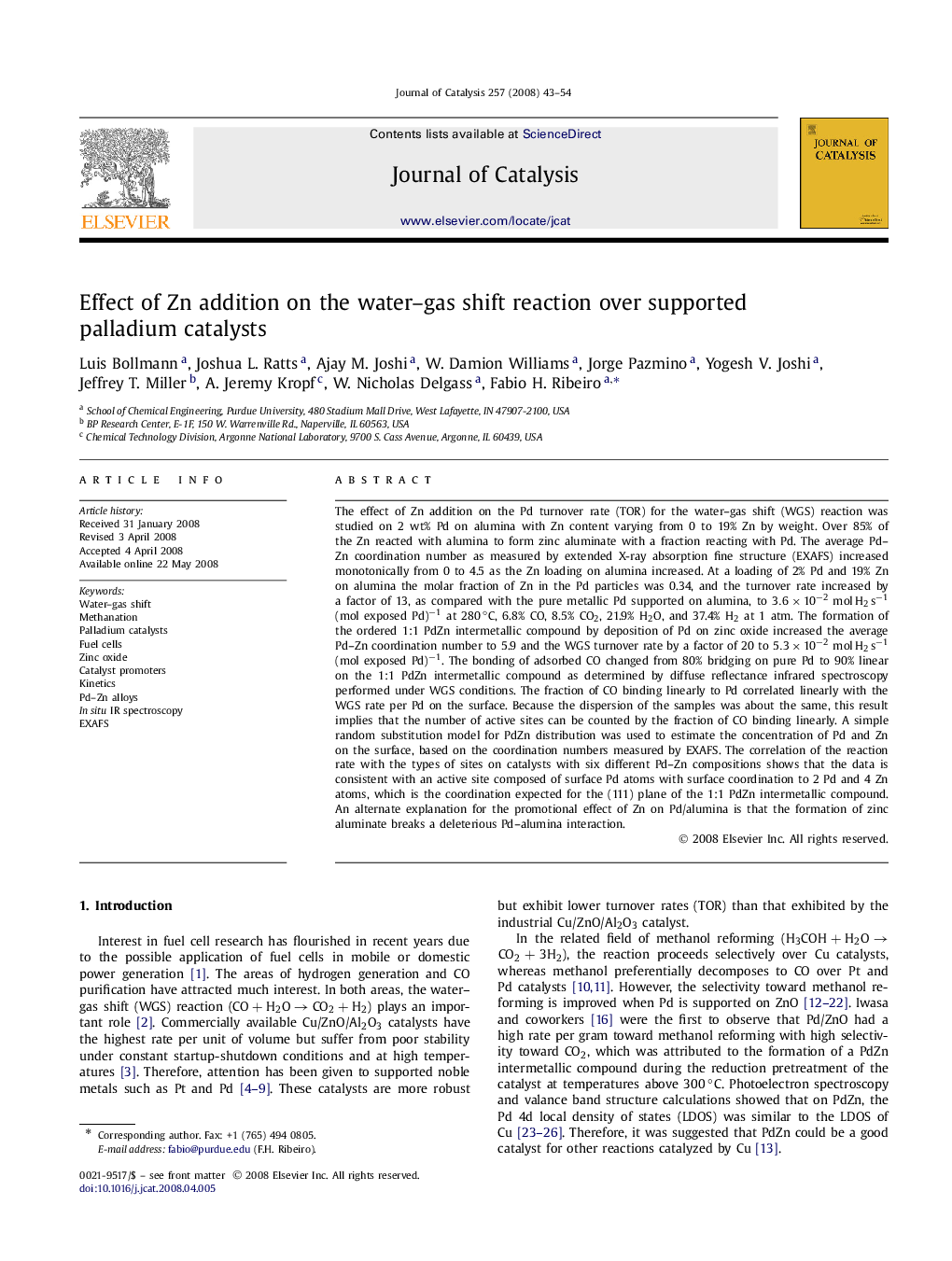| Article ID | Journal | Published Year | Pages | File Type |
|---|---|---|---|---|
| 62419 | Journal of Catalysis | 2008 | 12 Pages |
The effect of Zn addition on the Pd turnover rate (TOR) for the water–gas shift (WGS) reaction was studied on 2 wt% Pd on alumina with Zn content varying from 0 to 19% Zn by weight. Over 85% of the Zn reacted with alumina to form zinc aluminate with a fraction reacting with Pd. The average PdZn coordination number as measured by extended X-ray absorption fine structure (EXAFS) increased monotonically from 0 to 4.5 as the Zn loading on alumina increased. At a loading of 2% Pd and 19% Zn on alumina the molar fraction of Zn in the Pd particles was 0.34, and the turnover rate increased by a factor of 13, as compared with the pure metallic Pd supported on alumina, to 3.6×10−2 molH2s−1 (mol exposed Pd)−1 at 280 °C, 6.8% CO, 8.5% CO2, 21.9% H2O, and 37.4% H2 at 1 atm. The formation of the ordered 1:1 PdZn intermetallic compound by deposition of Pd on zinc oxide increased the average PdZn coordination number to 5.9 and the WGS turnover rate by a factor of 20 to 5.3×10−2 molH2s−1 (mol exposed Pd)−1. The bonding of adsorbed CO changed from 80% bridging on pure Pd to 90% linear on the 1:1 PdZn intermetallic compound as determined by diffuse reflectance infrared spectroscopy performed under WGS conditions. The fraction of CO binding linearly to Pd correlated linearly with the WGS rate per Pd on the surface. Because the dispersion of the samples was about the same, this result implies that the number of active sites can be counted by the fraction of CO binding linearly. A simple random substitution model for PdZn distribution was used to estimate the concentration of Pd and Zn on the surface, based on the coordination numbers measured by EXAFS. The correlation of the reaction rate with the types of sites on catalysts with six different PdZn compositions shows that the data is consistent with an active site composed of surface Pd atoms with surface coordination to 2 Pd and 4 Zn atoms, which is the coordination expected for the (111) plane of the 1:1 PdZn intermetallic compound. An alternate explanation for the promotional effect of Zn on Pd/alumina is that the formation of zinc aluminate breaks a deleterious Pd–alumina interaction.
